第218章
[I extract a few entries from my father's Diary:--"January 7th. The second edition, 3000 copies, of 'Origin' was published.""May 22nd. The first edition of 'Origin' in the United States was 2500copies."
My father has here noted down the sums received for the 'Origin.'
First Edition......180 pounds Second Edition.....636 pounds 13 shillings 4 pence Total..............816 pounds 13 shillings 4 pence.
After the publication of the second edition he began at once, on January 9th, looking over his materials for the 'Variation of Animals and Plants;' the only other work of the year was on Drosera.
He was at Down during the whole of this year, except for a visit to Dr.
Lane's Water-cure Establishment at Sudbrooke, and in June, and for visits to Miss Elizabeth Wedgwood's house at Hartfield, in Sussex (July), and to Eastbourne, September 22 to November 16.]
CHARLES DARWIN TO J.D. HOOKER.
Down, January 3rd [1860].
My dear Hooker, I have finished your Essay. ('Australian Flora.') As probably you would like to hear my opinion, though a non-botanist, I will give it without any exaggeration. To my judgment it is by far the grandest and most interesting essay, on subjects of the nature discussed, I have ever read.
You know how I admired your former essays, but this seems to me far grander. I like all the part after page xxvi better than the first part, probably because newer to me. I dare say you will demur to this, for Ithink every author likes the most speculative parts of his own productions.
How superior your essay is to the famous one of Brown (here will be sneer 1st from you). You have made all your conclusions so admirably clear, that it would be no use at all to be a botanist (sneer No. 2). By Jove, it would do harm to affix any idea to the long names of outlandish orders.
One can look at your conclusions with the philosophic abstraction with which a mathematician looks at his a times x + the square root of z squared, etc. etc. I hardly know which parts have interested me most; for over and over again I exclaimed, "this beats all." The general comparison of the Flora of Australia with the rest of the world, strikes me (as before) as extremely original, good, and suggestive of many reflections.
...The invading Indian Flora is very interesting, but I think the fact you mention towards the close of the essay--that the Indian vegetation, in contradistinction to the Malayan vegetation, is found in low and level parts of the Malay Islands, GREATLY lessens the difficulty which at first (page 1) seemed so great. There is nothing like one's own hobby-horse. Isuspect it is the same case as of glacial migration, and of naturalised production--of production of greater area conquering those of lesser; of course the Indian forms would have a greater difficulty in seizing on the cool parts of Australia. I demur to your remarks (page 1), as not "conceiving anything in soil, climate, or vegetation of India," which could stop the introduction of Australian plants. Towards the close of the essay (page civ), you have admirable remarks on our profound ignorance of the cause of possible naturalisation or introduction; I would answer page 1, by a later page, viz. page civ.
Your contrast of the south-west and south-east corners is one of the most wonderful cases I ever heard of...You show the case with wonderful force.
Your discussion on mixed invaders of the south-east corner (and of New Zealand) is as curious and intricate a problem as of the races of men in Britain. Your remark on mixed invading Flora keeping down or destroying an original Flora, which was richer in number of species, strikes me as EMINENTLY NEW AND IMPORTANT. I am not sure whether to me the discussion on the New Zealand Flora is not even more instructive. I cannot too much admire both. But it will require a long time to suck in all the facts.
Your case of the largest Australian orders having none, or very few, species in New Zealand, is truly marvellous. Anyhow, you have now DEMONSTRATED (together with no mammals in New Zealand) (bitter sneer No.
3), that New Zealand has never been continuously, or even nearly continuously, united by land to Australia!! At page lxxxix, is the only sentence (on this subject) in the whole essay at which I am much inclined to quarrel, viz. that no theory of trans-oceanic migration can explain, etc. etc. Now I maintain against all the world, that no man knows anything about the power of trans-oceanic migration. You do not know whether or not the absent orders have seeds which are killed by sea-water, like almost all Leguminosae, and like another order which I forget. Birds do not migrate from Australia to New Zealand, and therefore floatation SEEMS the only possible means; but yet I maintain that we do not know enough to argue on the question, especially as we do not know the main fact whether the seeds of Australian orders are killed by sea-water.
The discussion on European Genera is profoundly interesting; but here alone I earnestly beg for more information, viz. to know which of these genera are absent in the Tropics of the world, i.e. confined to temperate regions.
I excessively wish to know, ON THE NOTION OF GLACIAL MIGRATION, how much modification has taken place in Australia. I had better explain when we meet, and get you to go over and mark the list.